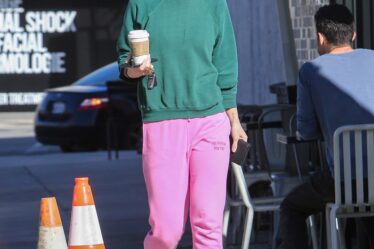
MEXICO CITY — On Saturday, Dior landed in a rainy Mexico City to stage its latest destination show at Colegio San Ildefonso, a former Jesuit seminary turned canvas for Mexico’s great 20th century muralists.
The 112-look outing ranged from a version of the traditional Charra suit to roomy denim ensembles over huipils. Butterfly motifs were threaded through the collection as were Dior’s codes: a Bar jacket and ‘Book Tote’ bags featured the work of master embroiderers and weavers from Oaxaca and Chiapas. But perhaps the most memorable through line was Mexican painter Frida Kahlo, who designer Maria Grazia Chiuri was able to strip of cliché by focusing on her feminist essence.
“She was completely in control of her image. And she worked on her own body — from a young age, everything that she built around it was to show herself and who she is,” said Chiuri.
Afterwards, newly appointed Dior CEO Delphine Arnault, in Mexico for the first time, suggested that Chiuri’s cross-cultural Cruise collections, a key part of the method that has made Dior one of fashion’s fastest-growing and most profitable brands, were here to stay.
“Maria Grazia has a very powerful way of working with local artists,” said Arnault. “Cruise is critical for us, it’s the collection that stays in stores the longest. Showing it in countries like Mexico in collaboration with home-grown savoir-faire is very important for Dior.”
European fashion houses have long sampled from other cultures. Chiuri’s approach stands out for the depth of her research and the emphasis she places on building mutually beneficial partnerships with local artists and artisans — all while ensuring her collections are tuned for commercial success.
“Fashion has the potential to be a bridge, and textile art, such as embroidery, can be a vehicle to connect different communities, enabling them to work together, understand each other more, and share ideas and expertise,” said Chiuri. “Of course, you have to give the original sources a contemporary attitude attractive to any cool young girl anywhere — this is fashion after all.”
The designer has defended her approach as “cultural appreciation” — not appropriation — that strengthens the traditions and practices she spotlights.
“This idea of protecting local heritage by forbidding a dialogue with outside partners carries a risk — that it won’t survive,” she said. “Some of the pieces in the collection would take an artisan working alone months to realise, at a high cost. Dior’s capabilities can give their skills a better chance to endure.”
It’s an extension of Chiuri’s desire to build a “global atelier” at Dior. “We are a couture brand, and to me, anything done in high quality by hand is couture. I don’t like the narrative that you can only find high-level skills in some European countries.”
Chiuri plans to come back to Mexico and deepen the brand’s new partnerships. “It’s a long process. I won’t stop, I see it as my obligation to recognize where great things are being done and help showcase them. I started out making shoes for a little company in Naples… I know what’s at stake, what can be lost and how to innovate while saving heritage. Cross-cultural exchanges are part of it.”



